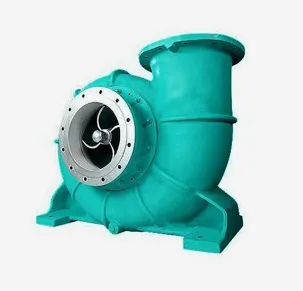Marathi
- Afrikaans
- Albanian
- Amharic
- Arabic
- Armenian
- Azerbaijani
- Basque
- Belarusian
- Bengali
- Bosnian
- Bulgarian
- Catalan
- Cebuano
- Corsican
- Croatian
- Czech
- Danish
- Dutch
- English
- Esperanto
- Estonian
- Finnish
- French
- Frisian
- Galician
- Georgian
- German
- Greek
- Gujarati
- Haitian Creole
- hausa
- hawaiian
- Hebrew
- Hindi
- Miao
- Hungarian
- Icelandic
- igbo
- Indonesian
- irish
- Italian
- Japanese
- Javanese
- Kannada
- kazakh
- Khmer
- Rwandese
- Korean
- Kurdish
- Kyrgyz
- Lao
- Latin
- Latvian
- Lithuanian
- Luxembourgish
- Macedonian
- Malgashi
- Malay
- Malayalam
- Maltese
- Maori
- Marathi
- Mongolian
- Myanmar
- Nepali
- Norwegian
- Norwegian
- Occitan
- Pashto
- Persian
- Polish
- Portuguese
- Punjabi
- Romanian
- Russian
- Samoan
- Scottish Gaelic
- Serbian
- Sesotho
- Shona
- Sindhi
- Sinhala
- Slovak
- Slovenian
- Somali
- Spanish
- Sundanese
- Swahili
- Swedish
- Tagalog
- Tajik
- Tamil
- Tatar
- Telugu
- Thai
- Turkish
- Turkmen
- Ukrainian
- Urdu
- Uighur
- Uzbek
- Vietnamese
- Welsh
- Bantu
- Yiddish
- Yoruba
- Zulu
Telephone: +86 13120555503
Email: frank@cypump.com
डिसेंबर . 27, 2024 04:34 Back to list
Choosing the Right Sewage Pump for Your Basement Drainage Needs
Understanding Basement Sewage Pumps
Basement sewage pumps play a crucial role in managing wastewater, particularly in homes where the bathroom or laundry is situated below the main sewer line. These small but powerful devices are designed to efficiently pump out wastewater and sewage to prevent flooding and unsanitary conditions in basements. As homes increasingly utilize basements for living space, understanding the importance and function of sewage pumps becomes vital for homeowners.
What is a Basement Sewage Pump?
A basement sewage pump, often referred to as a sewage ejector pump, is specially designed to move sewage and wastewater from lower levels of a home to a sewer line that is situated above. This is essential for houses built in areas where gravity alone cannot facilitate the flow of waste to the main sewer system. The pump collects wastewater through a network of pipes connected to sinks, toilets, and other fixtures, funneling it to the sewage system.
How Does It Work?
Sewage pumps are activated when wastewater levels rise within a sump basin. The float switch, which is typically included with the pump, detects the rise in water and triggers the pump to start. Once active, the pump forces the sewage up through an outlet pipe connected to the sewer line. The pump continues to operate until the float switch indicates that the water level has dropped, at which point it will turn off, conserving energy.
There are two main types of sewage pumps *submersible pumps* and * pedestal pumps*. Submersible pumps are installed below the sewage level, allowing them to effectively handle both solid and liquid waste without the risk of clogging. Pedestal pumps, on the other hand, are located above the sump basin, making them easier to access for maintenance, although they may not handle solids as effectively.
Why are Basement Sewage Pumps Necessary?
1. Preventing Flooding One of the primary roles of a sewage pump is to prevent basement flooding. Without a pump, wastewater can accumulate and lead to significant water damage and structural issues in your home.
2. Health and Sanitation Accumulated sewage can create unsanitary conditions, leading to health risks from mold, bacteria, and other pathogens. A functioning sewage pump helps ensure a clean and safe environment.
basement sewage pump

3. Property Value A well-maintained sewage pump system can enhance property value. Potential buyers view functional basements as desirable, and issues related to wastewater management can deter interested parties.
4. Cost-Effective While sewage pumps require an initial investment for purchase and installation, they can save homeowners money by preventing large-scale damage and the costly repairs associated with flooding and sewage spills.
Maintenance Tips
To ensure the longevity and efficiency of your basement sewage pump, regular maintenance is crucial. Here are some tips
- Regular Inspections Check the pump periodically to ensure it is in good working condition. Look for any visible signs of wear and tear, or any unusual noises when the pump operates.
- Cleaning the Sump Pit Keep the sump pit clear of debris to prevent clogs. Remove any accumulated sludge or solids regularly.
- Test the System Manually lift the float switch or fill the sump pit with water to test if the pump turns on and works correctly.
- Check the Power Supply Ensure that the pump is plugged in and the circuit is functioning. Some homeowners opt for a backup battery system to prevent failures during power outages.
Conclusion
In summary, basement sewage pumps are essential components of modern home plumbing, particularly in properties with lower-level bathrooms or laundry facilities. By understanding their function and maintaining them properly, homeowners can protect their property, ensure sanitation, and improve the longevity of their plumbing systems. Investing in a quality sewage pump system is not just about immediate convenience; it’s about safeguarding your home against potential future problems.
-
Heavy-Duty Mining Sludge Pumps - Wear-Resistant Slurry Handling
NewsAug.02,2025
-
Horizontal Split Case Pump with GPT-4 Turbo | High Efficiency
NewsAug.01,2025
-
ISG Series Pipeline Pump - Chi Yuan Pumps | High Efficiency, Durable Design
NewsAug.01,2025
-
Advanced Flue Gas Desulfurization Pump with GPT-4 Turbo | Durable & Efficient
NewsJul.31,2025
-
ISG Series Vertical Pipeline Pump - Chi Yuan Pumps | Advanced Hydraulic Design&Durable Construction
NewsJul.31,2025
-
ISG Series Vertical Pipeline Pump - Chi Yuan Pumps | Energy Efficient & Low Noise
NewsJul.31,2025










